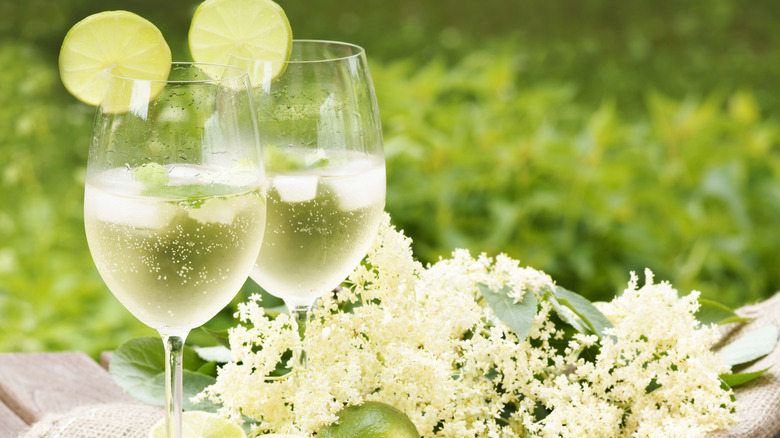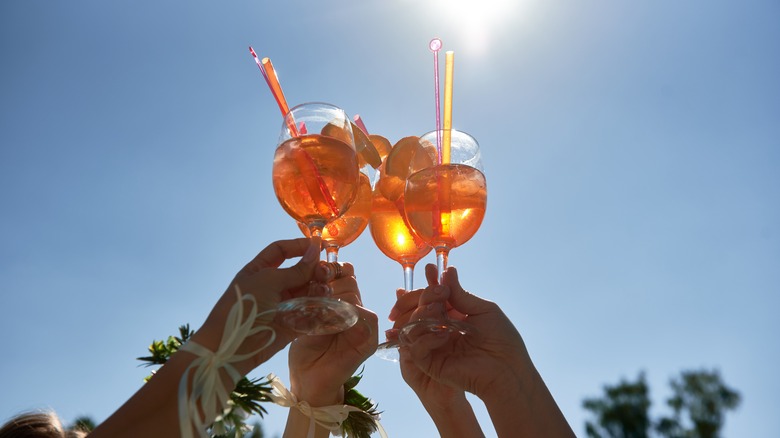The Hugo Spritz Is A Must-Know Mojito-Like Drink That's Perfect For Summer
Move over, Aperol. There is a new spritz in town, and it's refreshing, lower in alcohol, and less bitter than its brilliantly-hued counterpart. The Hugo Spritz is trending on TikTok and elsewhere — for good reason.
You can think of the cocktail as an Alpine version of the Italian Spritz. It was first Invented in 2005 by bartender Roland Gruber, in the small town of Naturno in South Tyrol at the San Zeno cocktail bar. He first called it the "Otto" but clients encouraged him to rename it "Hugo," which he did. Gruber had the idea of lightening and sweetening the typical Spritz, using local ingredients. The original combined Prosecco with locally-available lemon balm syrup and a sprig of mint, topped with soda water. But somewhere along the way, the lemon balm syrup was swapped out for elderflower syrup or elderflower liqueur. It's an understandable change since elderflowers and their syrup are also common in the South Tyrol region, and so both herbs smell (and taste) like a summer morning in the mountains.
On a practical level, not many bars have lemon balm or elderflower syrup lying around. Many do, however, have Elderflower liqueur readily available. Saint Germain elderflower liqueur is produced in the Savoie region of the French Alps and has made its way into numerous cocktails in recent years. The most familiar version of the Hugo is generally made with 3 parts prosecco, 2 parts Saint Germain liqueur, and one part club soda or seltzer, plus a mint sprig for an herbal touch.
Spritz: Summering like an Italian
Spritzes of all sorts are a summer Italian staple, and for many, they connote images of the dolce vita: sunny beaches filled with beautiful people, a leisurely lifestyle, and great food. Spritzes come in many varieties, but they are consistently bubbly, refreshing, and not too strong. In Italy, spritzes are categorized as an aperitivo: something you drink before dinner that won't weigh you down. The best-known varieties combine Prosecco with small quantities of a bitter liqueur like Aperol or Campari and then a bit of soda to top it off (and keep it from getting too strong), but you can also find an array of variations on the theme, like the limoncello spritz.
The easy-to-find ingredients, unfussy ratios, and refreshing nature of spritzes make them a natural choice for vacationers. They lend themselves easily to experimentation, and their less-concentrated alcohol content means that you can probably have more than one.
After all, it's summertime: the living — and the drinking — should be easy.

